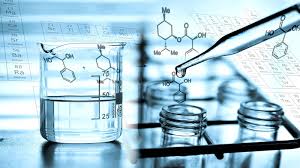
Chemistry Research Paper
Order Instructions:
1. Which of the following occurs naturally as a diatomic element?
A. sodium B. bromine C. silicon D. neon
2. The atomic mass of iron is 55.85 amu. From this we can conclude:
A. every iron atom has a mass of 55.85 amu
B. every iron atom has 55.85 neutrons
C. iron is a combination of atoms of different masses, the average of which is 55.85 amu
D. iron atoms have 55.85 protons
3. Which of the following correctly describes copper?
A. representative element in period 4 and group 11
B. representative element in period 11 and group 4
C. transition element in period 4 and group 11
D. transition element in period 11 and group 4
4. All of the following statements are correct EXCEPT
A. The conversion of compounds into elements is a chemical change.
B. The conversion of C12H22O11 into carbon, hydrogen and oxygen is a chemical change.
C. The conversion of elements into compounds is a chemical change.
D. The conversion of liquid water to gaseous water is a chemical change.
5. The number of neutrons and protons in a given nucleus determines the
A. atomic number B. mass number C. number of isotopes D. number of ions
6. Which of the following is both a metal and a representative element?
A. lithium B. hydrogen C. carbon D. sulfur
7. What is the symbol for lead?
A. Le B. Sn C. Pb D. Bi
8. How many protons, neutrons, and electrons are in the antimony(III) ion, Sb 123
51
3+?
A. 123p, 72n, 123e B. 51p, 72n, 48e
C. 51p, 72n, 51e D. 72p, 51n, 69e9.
9. Which of the following is a correct description of MgCl2?
A. A pure substance that is an element
B. A pure substance that is a compound
C. A pure substance that is a mixture
D. Not a pure substance. It is a mixture.
10. What is the atomic mass of silver?
A. 107.87 amu B. 32.07 amu C. 47 amu D. 16 amu
11. Which of the following phases of matter is the most disorganized?
A. solid B. liquid C. gas
12. Which of the following has the largest atomic number?
A. potassium B. boron C. tin D. lead
13. Which of the following correctly represents the elemental form of hydrogen?
A. 2 H B. H2 C. H+ D. H
14. Which of the following best describes F2?
A. The symbol for the fluorine element
B. The symbol for the fluorine compound
C. The symbol for the fluorine ion
D. The symbol for an isotope of fluorine with a mass number of 2
15. Salt water is an example of a/an
A. element B. compound C. pure substance D. mixture
16. Which of the following describes the difference between Br– and Br?
A. Br is a neutral atom and Br– is an ion with 1 more electron than Br.
B. Br is a neutral atom and Br– is an ion with 1 less electron than Br.
C. Br and Br– are two different isotopes of the same atom.
D. Br is a neutral atom and Br– is an ion with 1 less proton than Br.
17. Part of Dalton’s Atomic Theory tells us:
A. All forms of matter always stays the same
B. Matter can undergo chemical changes, but the atoms rearrange in whole number ratios
C. Matter can undergo chemical changes, but the compounds rearrange in whole number ratios
D. The amount of matter at the end of a reaction is usually greater than the amount at the start
18. Which two subatomic particles have about the same mass?
A. protons and electrons
B. neutrons and electrons
C. protons and neutrons19.
19. How many protons, neutrons, and electrons are in the 57Fe3+ ion?
A. 57p, 26n, 23e B. 57p, 26n, 54e
C. 26p, 31n, 29e D. 26p, 31n, 23e
20. An element is a pure substance
A. that can be broken down into simpler substances by physical means.
B. in which two or more atoms of different types are found in various proportions.
C. that is the simplest form found in nature, which can be found by chemical means
SAMPLE ANSWER
Chemistry Research Paper
Question 1
- bromine
Question 2
- every iron atom has a mass of 55.85 amu.
Question 3
- transition element in period 4 and group 11
Question 4
- The conversion of liquid water to gaseous water is a chemical change.
Question 5
- mass number
Question 6
- lithium
Question 7
- Pb
Question 8
- 51p, 72n, 48e
Question 9
- A pure substance that is a compound
Question 10
- 107.87 amu
Question 11
- gas
Question 12
- lead
Question 13
- H
Question 14
- The symbol for the fluorine compound
Question 15
- mixture
Question 16
- Br is a neutral atom and Br– is an ion with 1 more electron than Br.
Question 17
- Matter can undergo chemical changes, but the atoms rearrange in whole number ratios
Question 18
- protons and neutrons
Question 19
- 26p, 31n, 23e
Question 20
- that can be broken down into simpler substances by physical means
References
Ball, P. (2002). The Ingredients: A Guided Tour of the Elements. Oxford: Oxford University Press.
Scerri, E. R. (2011). The periodic table: A very short introduction. Oxford: Oxford University Press.
We can write this or a similar paper for you! Simply fill the order form!




